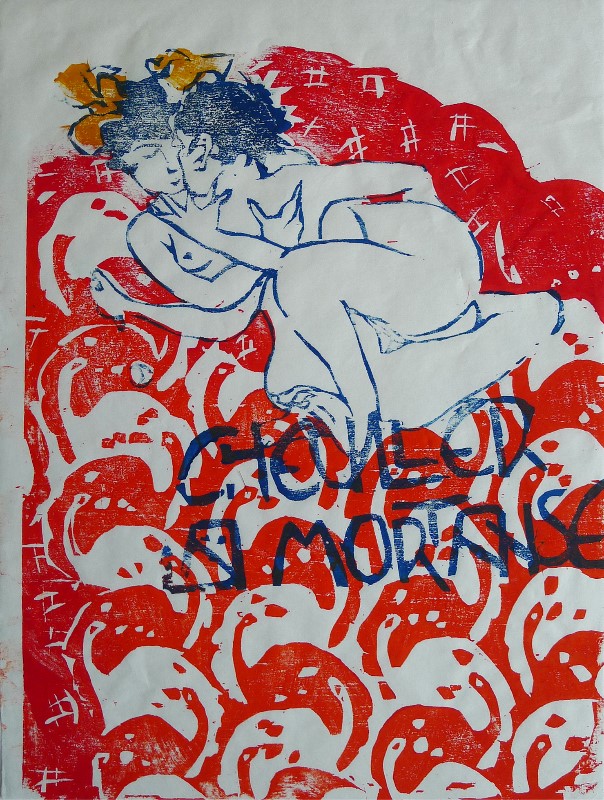In his speech in praise of a nymph’s tits (‘En faveur des tetins d’une nymphe’), the early seventeenth-century French comedian known as Bruscambille describes an apparently disturbing dream involving this part of the female anatomy. He is saved from this nocturnal vision by seeing a Latin saying at the end of Mercury’s wand: ‘Quae mutuo sumpseris pari vel etiam | Maiori mensura reddas’ [‘Take fair measure from your neighbour and pay him back fairly with the same measure, or better, if you can’] (Hesiod, Works and Days, 349-51).
Disarmingly claiming to understand Latin like a cow, he gives his own version of Hesiod’s moral injunction:
Pour mettre la femme a son aise,
Il la convient un peu flatter,
Mais pour du tout la contenter
Il faut cheviller la mortaise.
My Exeter colleague and translator of Guillaume Apollinaire and many others, Professor Martin Sorrell, has rendered this little poem as follows:
To make a woman drop her guard,
Flatter her somewhat.
But to please her, find the slot
And drive the peg in hard.
Clearly, Bruscambille has an unusual take on the dictum about paying your neighbour back the same, or better, but what, one may well ask, has all this to do with tits? The answer lies in the fact that men pay women back for their bosomy apples with their Priapic pears, which are accompanied by comforting and stiff branches.
This noble image of human cooperation and exchange has inspired one of Dominic Hills’s most recent prints, itself inspired, as ever, by Japanese erotic prints known as shunga. And of course this whole blog is the result of an exchange of the fruits of academic research and artistic practice. Thus Hesiod’s view from the seventh or eighth century B.C. resonates centuries later, in the early 1600s in France, through to the present internet age, as humans continually exchange their apples and pears, whether to ‘drive the peg in’ (‘cheviller la mortaise’), or for other pursuits.
P.S. Men also drive the peg in to hang four hams from it, but that is another story.

Cheviller la mortaise
© Dominic Hills
